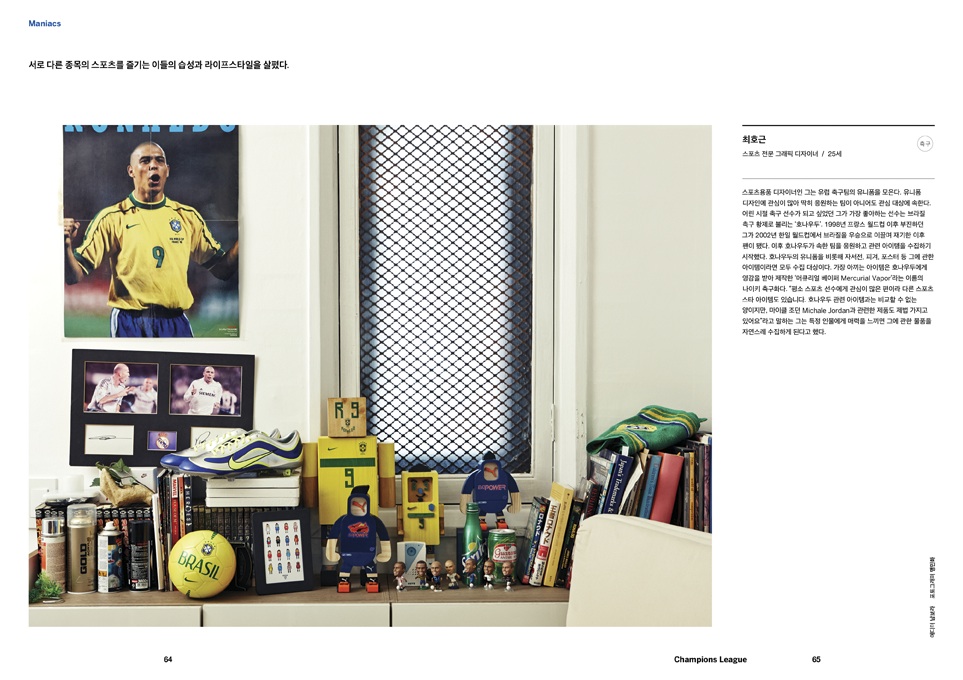| Welcome to the 27th issue of B. A while ago, a friend of mine who used to work in the marketing field and I had a discussion about what we considered the most perfect example of marketing. Surprisingly, our conclusion was not a global brand like Coca-Cola or Nike, but was rather an international sports competition: the FIFA World Cup. At first glance, this might seem odd to most consumers because they think the essence of international sporting events like the Olympic Games and the World Cup is rooting for one’s country and the joy of winning. And enjoying sports doesn’t seem to demand anything of fans except watching TV and cheering. But one would think differently if he realized, by taking a closer look, that the “devoted attention” brought about among the public during those events is precisely what all marketers want so badly. No advertisement or PR campaign can ominate the press or the airwaves as sports competitions do. With the eyes of people around the world fixed on one event, it becomes an important moment for which any nation or company can mobilize all its resources. This keen public interest is converted into monetary value, resulting in the movement of an enormous amount of capital. Countries and companies alike try to capture the amazing opportunities that these moments of human unity offer. The term “Attention Economy” was discussed in the mid 2000s, frequently accompanied by the term “Web 2.0.” The “attention” in this phrase is slightly different from the concept above, but it is similar in that our attention is the “price” we pay. In fact, we are living in a world where we pay for more in the form of attention than we pay for in money. In this issue, B tries to examine a brand as “an object of passionate attention.” That is, a brand not just as a tool for selling products or services, but as something that holds our attention even when we pay nothing at all. This issue introduces the Champions League, a European football club competition that is often compared to the World Cup. While the World Cup aspires to the lofty purpose of uniting mankind, the Champions League is solely focused on fierce, city-based competition. Instead of conjuring a noble image of fair sportsmanship, the Champions League is often associated with a ruletempered war of attrition to sort out the strongest of the strong. Although those uninterested in football may find it surprising, the Champions League is renowned as the world’s most-watched competition among single-sport events, offering more prize money than any other sporting event. This creates a circulative economy consisting of revenues from global broadcast rights, ticket sales, and sponsorships, which makes the league hold significant implications for all the parties involved, including viewers, sponsors, and football clubs. Even those who don’t know much about football and are unfamiliar with overseas football leagues would have read about the football club brand ranking list compiled by Forbes, an American business magazine, or heard of the names Real Madrid or Manchester United. And anyone who has heard of the talent of renowned Korean footballer Ji-sung Park, or of the leadership of retired Manchester United manager Alex Ferguson, would agree that football leagues and clubs should be thought of as brands and not just objects of fan adulation. Marketing is defined as encouraging the public to buy a certain product, but good branding makes marketing unnecessary. And good branding starts with attracting attention. If what you do begins to draw the attention of those around you, then you have made a good start—because that interest itself is significant. PublisherSuyong Joh 02 INTRO Champions League matches always start in the early evening. B tries to capture the tension charging the stadium at dusk. 18 UNDERSTANDING B looks at the UEFA Champions League and the other football tournaments that cause excitement around the globe, the European leagues that regularly produce Champions League contenders, and some symbolic items that represent the appeal of the Champions League. 30 CLUBS There are football clubs that have made the most appearances in the Champions League semi-finals over the last decade. B examines the values behind each club through the keywords that European football lovers associate with them. 36 MARKETING B looks at the promotional efforts made by the official sponsors of the Champions League. 44 TALKS ON CHAMPIONS LEAGUE B asked Champions League fans around the world about their thoughts of the league to take a peek at what appeals to them outside of the matches themselves. 56 ENTERTAINMENT Football lovers spend quite a lot of time enjoying their passion. B heard from three feverish Champions League fans about what they do for entertainment besides watching games. 58 COLLECTORS For football lovers, collecting football memorabilia is as meaningful as watching the games. 64 MANIACS B looks at the nature and lifestyles of people who enjoy different sports. 73 B’S CUT In their endless pursuit to become the best of the best, Champions League players resemble medieval warriors fighting for their lives. B captures this drive in Champions League scenes from the past. 88 BRAND STORY The UEFA Champions League began in 1955 as a football club competition encompassing the whole of Europe. B listens to the story of the Champions League, which has undergone continual refinement on the way to becoming the world’s most prestigious football competition. 110 OUTRO Shouts resonate from the stands as the players enter the stadium. The starting whistle blows across a field filled with excitement and tension. |
 |
 |
 |